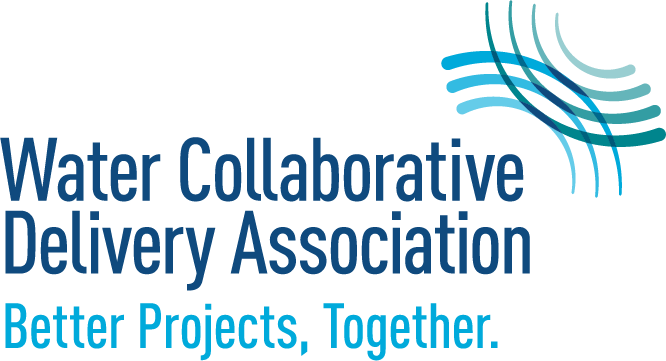Remember the Yugo? Wikipedia reminds us that you could buy one of these imported cars brand new for $3,990 in 1987.2 That’s about $9,1003 in 2020 dollars — about a third less than the least expensive new car that you can actually buy today (which, according to Automobile Magazine, is a 2020 Chevrolet Spark LS for $14,395,4 if you happen to be in the market).
A thirty-plus percent discount isn’t bad for a brand new car — it sounds like a great deal!
Wouldn’t it be great if local governments and utilities paid as much attention to the competitive market? Wouldn’t ratepayers benefit from responsible budget management, competitive pricing, and efficiency?
Except for one thing: The Yugo was one of the worst cars ever sold. Incredibly inexpensive going in, its repair record and lack of durability was legendary — it was ranked as Car Talk’s “worst car of the millennium.”5 More than three decades after its peak sales, the Yugo still makes a good joke.
There are certainly fans who blame the Yugo’s demise on a disposable mentality…. a great idea that simply lacked proper maintenance. They sold a lot of cars. But in truth, we’ve all been there: a limited budget and the need to get from point A to point B. All the little black dots in Consumer Reports that scream, “STAY AWAY, DON”T BUY!” make no difference when your budget is, well, your budget.
The next several years will certainly bring unprecedented uncertainty – risks and opportunities – for infrastructure investment. It’s likely that infrastructure funding will come in new forms, including WIFIA,6 infrastructure stimulus funding, 7 and increasing use of public-private partnerships.8 It’s also likely that this investment will create a scramble for shovel ready projects, while the opportunity for funding is there. (Remember the “shovel ready” meme, circa 2009?9) In the inevitable rush, it will be most tempting to move fast and spend quickly.
And when the rush comes, here are three practical ideas for Remembering the Yugo:
- Include a life-cycle cost component.10 This is the most straightforward method for achieving true best value: Avoid the Yugo approach by adding predicted maintenance and operations costs to the capital cost when evaluating proposals for your project. Even projects with no long-term O&M scope can incorporate meaningful life-cycle cost evaluation factors such as power usage, durability of equipment, and projected use of chemicals and other consumables. However, without an actual O&M period to hold a design-builder accountable for life-cycle performance, the challenge is to make sure life-cycle claims are documented and defensible– so engage your O&M team (or owner advisor) in developing a verifiable life-cycle model.
- Establish a genuine balance between cost and technical criteria.11 Best-value selection is ultimately based on a ratio of price to technical scoring. Many owners are supportive of price having a lower weighted value for price and higher values for technical proposals (for example, price is often published as being between 25% to 40% of the total score). However, these ratios can become less meaningful in practice if the technical scoring process and evaluation criteria result in tightly bunched results – a difference of just a few points in an evaluation committee’s technical score will effectively elevate the weight of the price scoring value to 100%, no matter what “best-value” ratio is communicated to the market and published in an RFP. The solution is to make sure your technical scoring process accentuates the relative benefits (and weaknesses) of technical proposals so that there is clear scoring differentiation among your choices – and so that price does not, by default, become the sole differentiator and tie-breaker.
- Be realistic about how much is too much.12 Despite the usefulness of using best-value selection to avoid the purchase of your own Yugo, it’s important to recognize that there are real policy – and political – limits on how much more a public entity can realistically spend for a “(much) better” proposal. An extra 5% to 10% (sometimes even a bit more) may be well worth the investment for a better, higher technical scoring project (and certainly would have been worth it for all those Yugo owners). But, a poorly devised best-value scoring system may end up designating a much higher priced proposal as the “winner” – a result that often forces an owner to make unplanned adjustments to the best-value weighting in order to make a more viable choice and instead pick a good value. To avoid this “blind canyon,” consider establishing a “competitive range” where any proposer with a price that is a certain percentage (say 10%, using the above example) above the lowest price is penalized. Establishing “competitive range” documents your organization’s realistic appetite for how much is too much at the outset.
The Yugo’s ultimate lesson: Let’s use collaborative delivery to promote best value instead of lowest cost, at all cost.
Notes:
1 With apologies to Davy Crockett, remembering the Alamo:
https://www.smithsonianmag.com/history/remembering-the-alamo-101880149/
2 Everything you ever wanted to know about the Yugo:
https://en.wikipedia.org/wiki/Yugo
3 Remember inflation?
https://www.bls.gov/data/inflation_calculator.htm
4 If you’re really on a budget, here are the ten lowest cost new cars available in 2020:
https://www.automobilemag.com/news/10-cheapest-cars-on-sale-united-states-today/
5 It should be a rule, every blog needs a Car Talk reference:
https://www.cartalk.com/content/whats-worst-car-millennium-0
6 WIFIA accommodates a variety of delivery methods, including design-build:
https://www.epa.gov/wifia
7 A recent Water Council webinar on the prospects for federal funding of water infrastructure:
https://thewatercouncil.com/media/blog/webinar-u-s-federal-water-policy-insights-into-congress/
8 The 2020 P3 Water Summit recently featured a presentation by WDBC:
https://youtu.be/hpuOTAwPJfs
9 Some interesting EPA ARRA lessons learned that just might be useful soon:
https://www.epa.gov/sites/production/files/2015-09/documents/lessons-learned-arra-funds-management.pdf
10 Optimizing life cycle cost is a foundation of DBIA’s Water/Wastewater Sector Best Practices:
https://dbia.org/wp-content/uploads/2018/05/Best-Practices-Water-Wastewater.pdf
11 Best value selection is fundamental to collaborative delivery, refer page 2-2 of the WDBC Water and Wastewater Design-Build Handbook, Fifth Edition:
https://watercollaborativedelivery.org/handbook/
12 “…Owners [should] ensure proposed prices are affordable while further enhancing the focus on technical excellence instead of proposed initial cost…” is a key element of DBIA’s Principles of Best Value Selection:
https://store.dbia.org/product/dbia-position-statement-best-value-selection/

